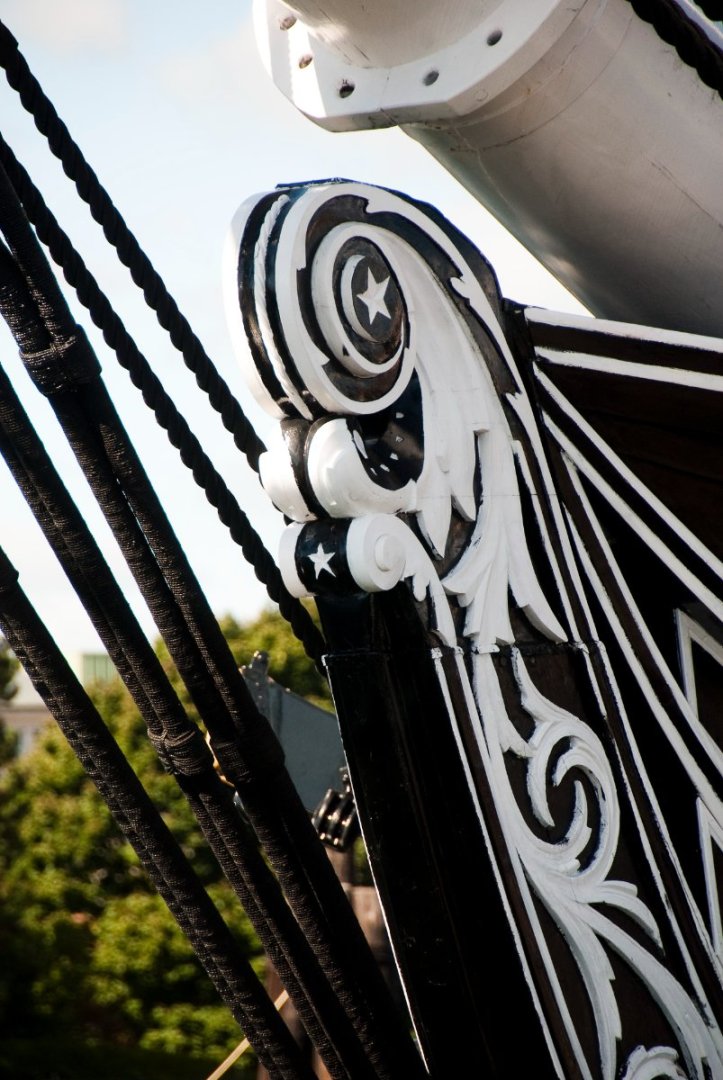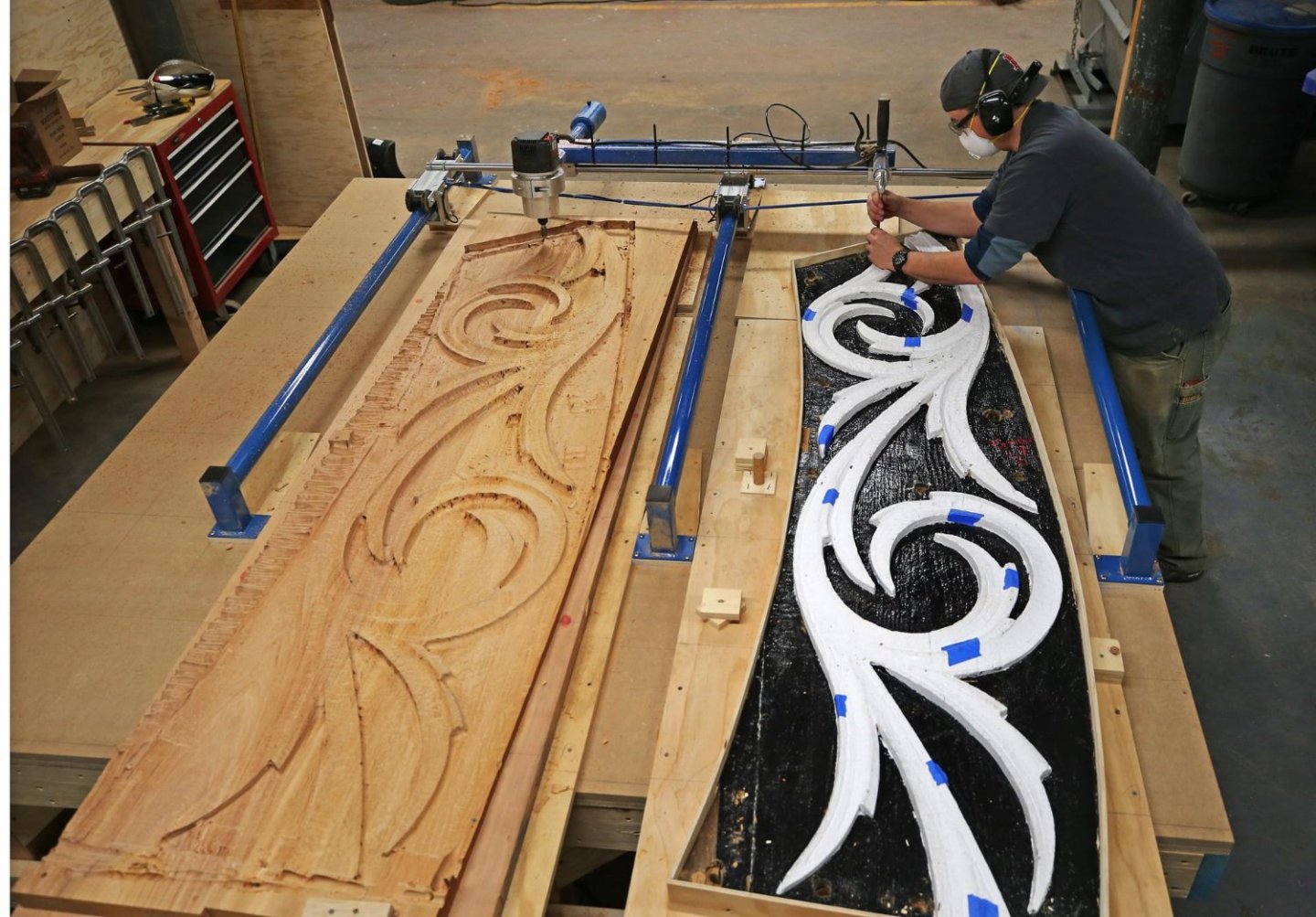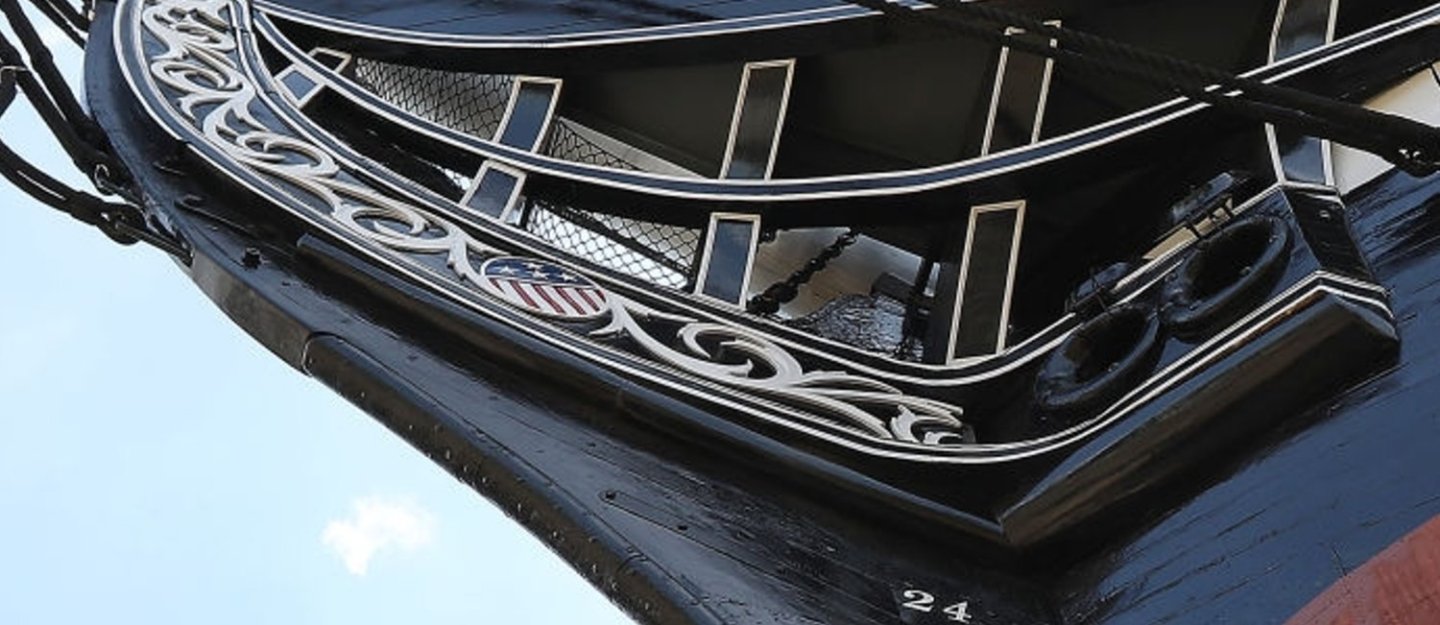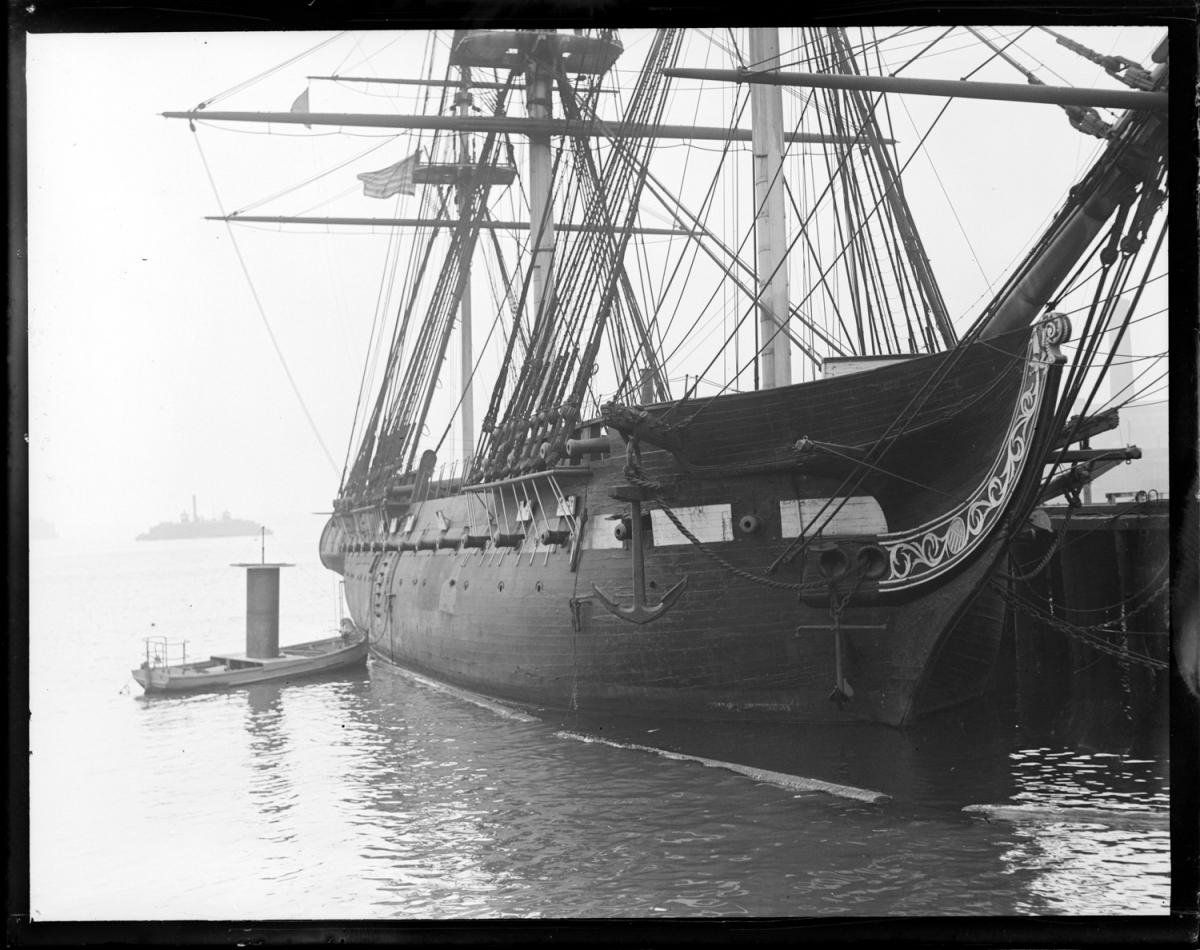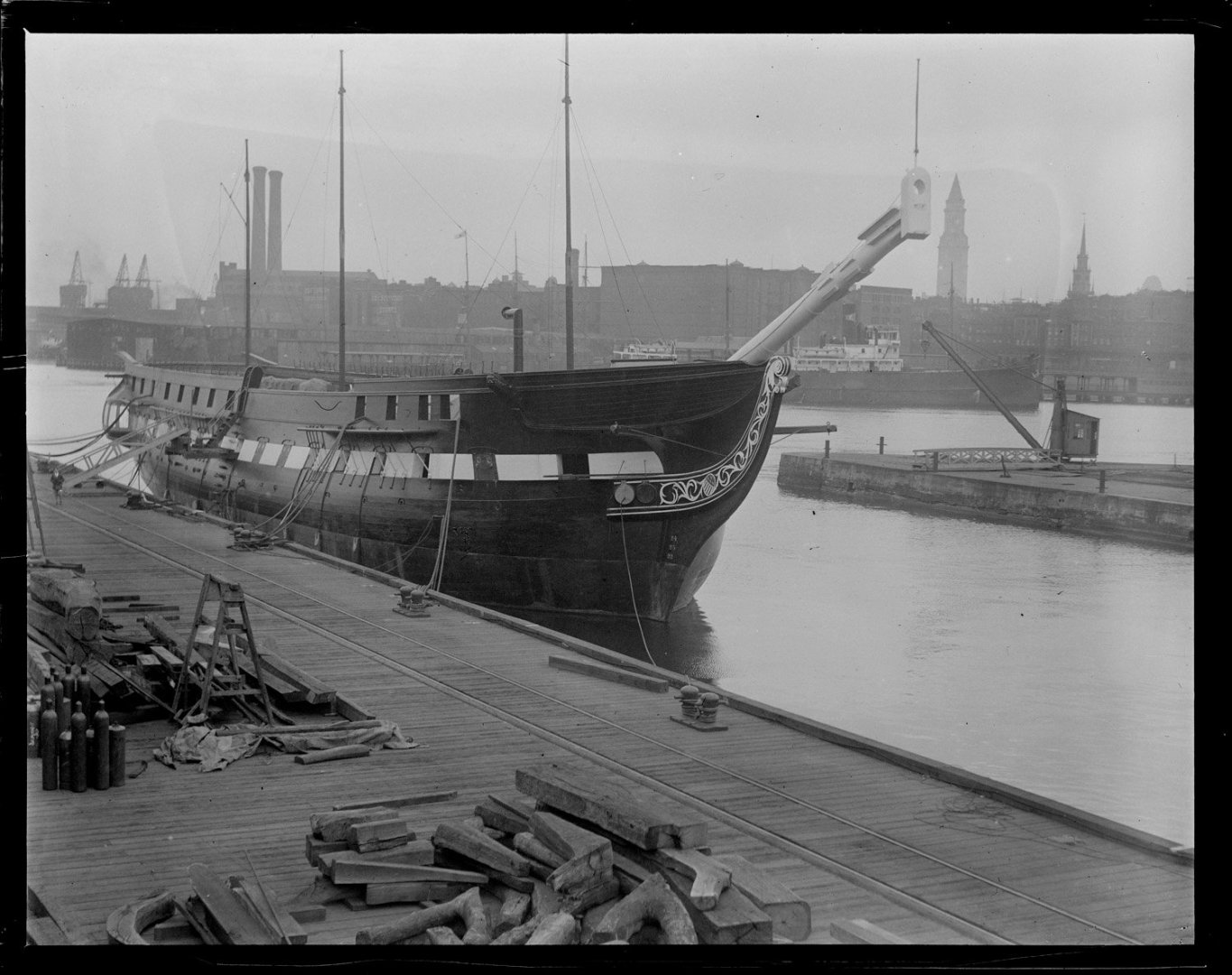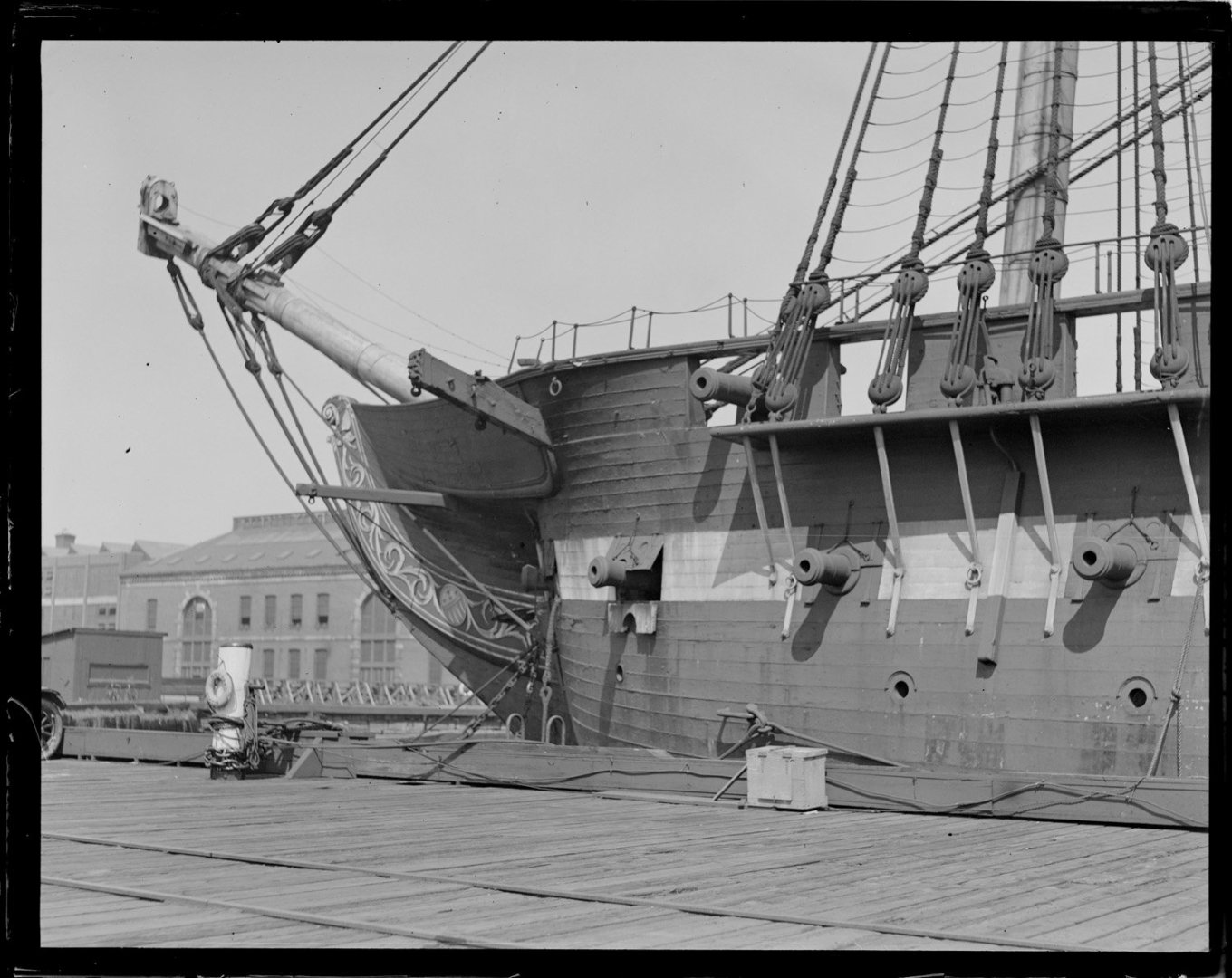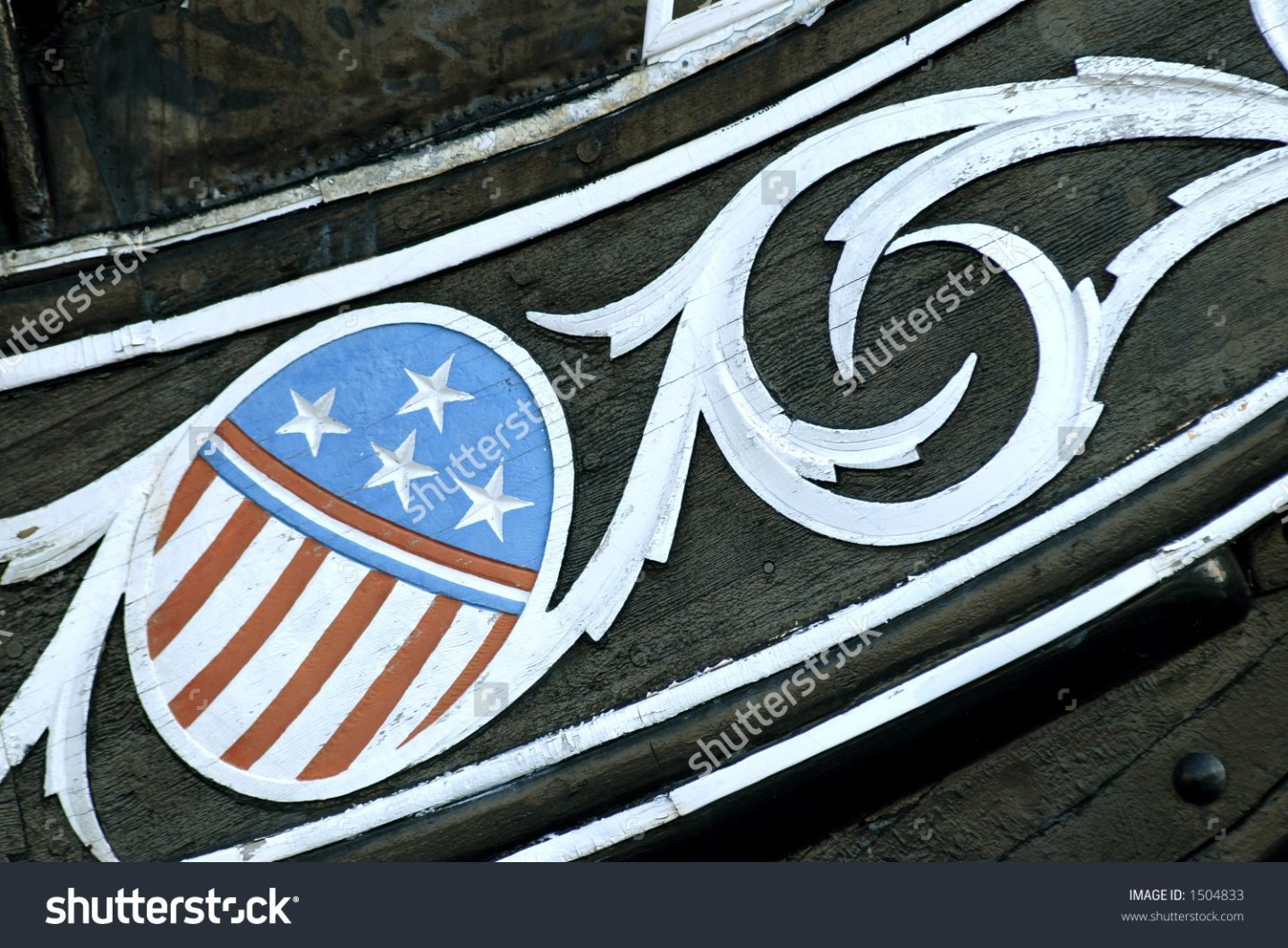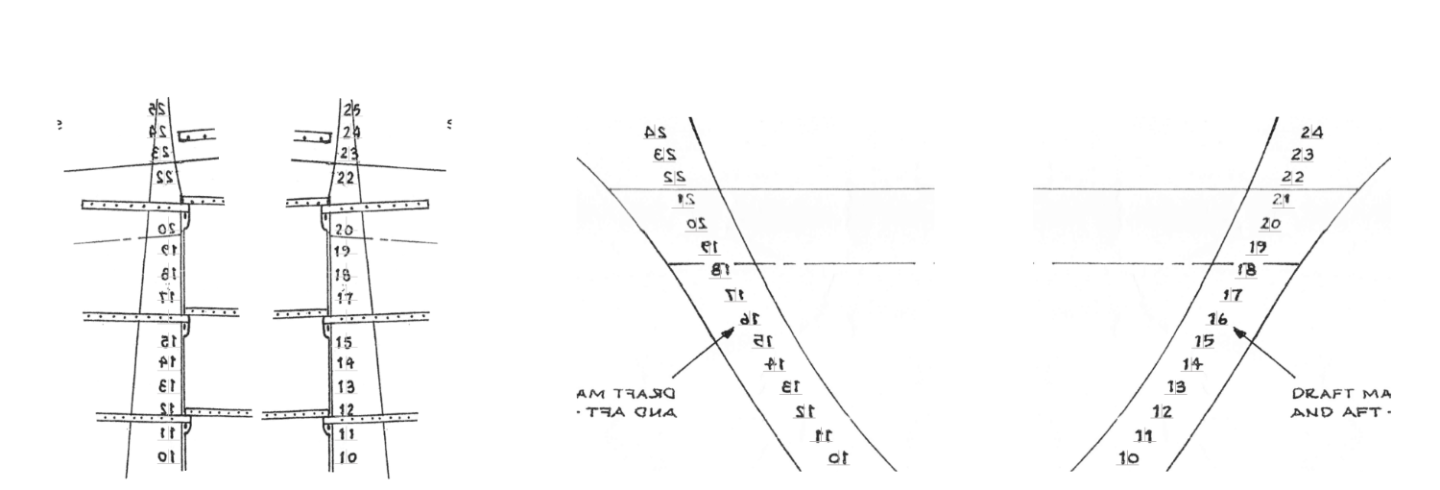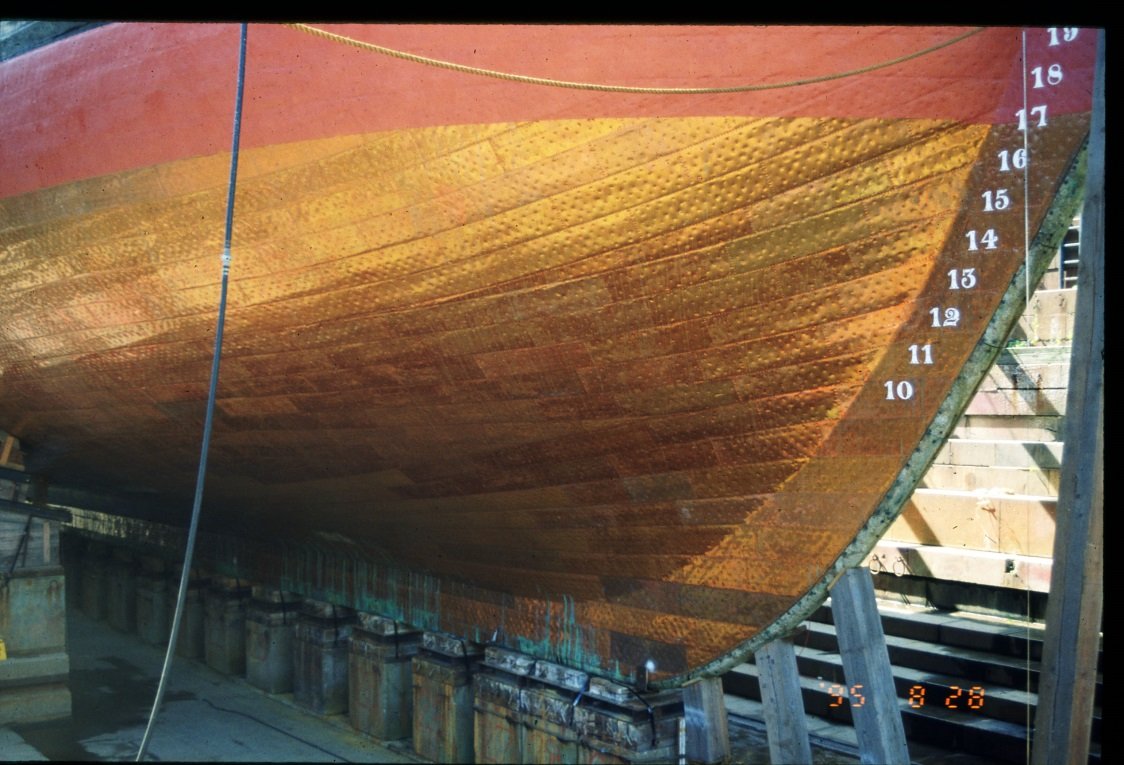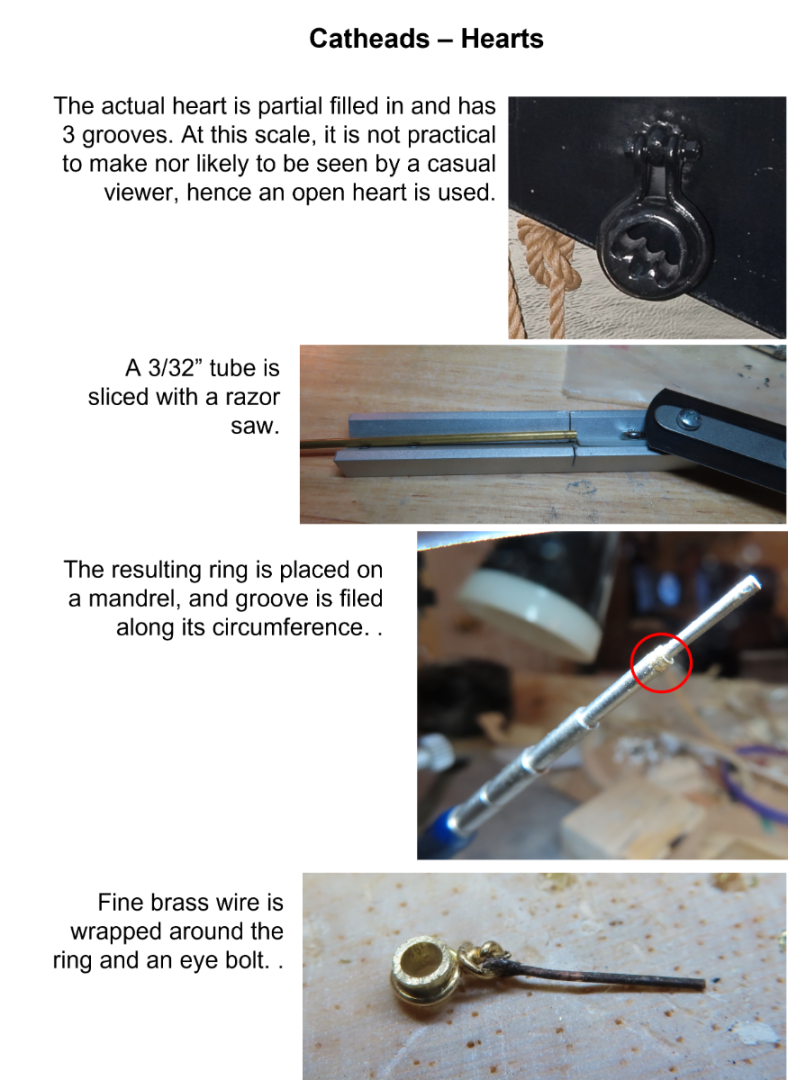-
Posts
2,618 -
Joined
-
Last visited
Content Type
Profiles
Forums
Gallery
Events
Everything posted by JSGerson
-
That was the easy part. The fiddlehead was a bit more complicated. If you look at the actual ship’s fiddlehead below, it is a highly complex sculpture. I made several attempts to simulate the fiddlehead spiral using wood, styrene, and finally brass. I finally I settled on 1/32” x 1/32” brass rod. It could be bent into a very tight spiral without breaking, it was the right thickness, and I could make spiral open so the black background would show through. The last two images are the first rough shapes. You can see that I left a round opening for the central white star in a black circle.
-
The colored shield image was provided for a decal in the practicum, but good as they were, I decided to see if I couldn’t make my own from an actual image (shown below). The colors of this image were weather faded, so I had to use the computer to make the colors pristine. The image was cropped and reduced to scale size to create a decal. The wood shield piece had to be painted totally white before the decal could be applied.
-
Being my anal self, instead of using the kit supplied pattern for the carvings, I used the US Navy’s plans. 27498 - Billet Head sh1 30155001 - Bow Scroll Board I cut the paper patterns of the scroll board and rubber cemented them onto the 1/64” boxwood. So, I wouldn’t lose my way, I shaded in the scroll work with a pencil. Then using very, very fine etching bits (cone, ball, and rod) in my rotary tool, I cut the patterns out of the wood. All the unshaded areas were removed. The images below show the process and are just rough dry fits.
-
What’s been keeping me up all night is trying to figure out how to fabricate the carvings on the scroll board. I studied how other builders performed this task and it varied from using styrene (practicum), just painting the design, building up solder on a brass plate and carving the soft solder, etc. The carvings are basically flat and slightly proud of the base surface, so they do have some 3D dimension, which for me ruled out just painting the designs. Making the carvings out styrene as the practicum shows, bothered me because it was not wood, it’s too thick for the scale, and the styrene becomes very delicate when attempting to make fine detail cuts. xKen (post 322), who made his carvings out of brass plate and solder did a beautiful job, but the result I felt was out of scale in height above the base. I felt it was too thick. So, I finally chose 1/64” thick boxwood for most of the carvings. The photo below shows the flatness of the carvings, and any surface carvings are minimal, and shallow. At this scale they would be lost when the carvings are painted.
-
It’s been almost 2 months since my last update. I’ve been busy working on the model, but that’s not to say I accomplished much.in the first month. Again, with the false starts, restarts, hesitations, and wasting time, I did manage to fabricate and install the “support shelf” to the underside of the bottom trailboard rail. The rails themselves still were not installed at this time so I would have more freedom to work on the scroll board off ship.
-
Hi KMart, sorry I didn't get back to you earlier but I was out of town for a week visiting my sister for Thanksgiving and today I'm catching up on emails and such. The cathead figurine I bought is about 1/4" square which was based on the the laser cut cathead supplied by the kit and verified by the US Navy plans. The US Navy plans show the face of the "cat" to be 15 1/2" wide or 0.202" at 1:76.8 scale. At 1:75 scale, it's 0.206", so 1:75 is the scale you need to buy. Sorry about the price change. Jon
-
It's a mutual admiration society between us because I did take your idea for the architectural tape and bought some to do my pin striping which by the way is more accurate than using 1/32" styrene or wood. The MS plans shows the detail as 1/32" half rounds strips or about 2 1/2" full scale proud of the rail. But if you look at all the current images, those strips are flat and hardly rise above the rail surface. Good call. I'm still trying to figure how to form the fiddle head with the star a bit more realistic than what shows on the kit's laser cut part. Yours is spot on to what the kit shows. I'm a bit anal and am trying to do a bit more. So far, not much luck. If I fail, I'll try to make mine, look like yours. I'll be taking a break this week, visiting with my sister for Thanksgiving in Windsor Connecticut, a colonial section of Hartford. Have a good holiday. Jon
-
After numerous false starts, restarts, hesitations, and wasting time, I got the pieces partially glued together all the while measuring, remeasuring, checking and rechecking and still I had to do a bit of fudging to get it to this stage. I discovered from photos of the underside of the trailboard taken during the 2015-17 restoration, there was a “support shelf” (my term) that is not shown on the kit plans or installed by anyone else that I could find sufficient details on. I did not find a US Navy plan of the trailboard rail construction. The last image shows two pieces of 3/64” x 3/16” basswood stock per side that will be used to create the “support shelf.”
-
Most builders who documented their builds, created their trail boards from two pieces of wood using the profile in the plans. I couldn’t quite wrap my head what the final shape was supposed to look like or how to insure I had the proper dimensions. The rails bend in all three spatial dimensions. Also, I didn’t trust that my model truly matched the plans, so I used my as-built model and the photographs of the actual ship as my guides. The result was that instead of two pieces, I ended up with three (not counting fudge factor pieces): The rail on the stem, the hull, and the transitional curve between the two, which for me was the key piece. The angle where the trailboard meets the hull was measured using a profile gauge which was original transferred onto a piece of card stock to make a preliminary template which you can see in the first image below. Once I assured myself this would work, the process was repeated on 1/8” thick piece of stock basswood. A parallel line was drawn to it as well a parallel line to the basswood edge which would eventually represent the hull’ A curve was drawn representing the outer edge of the rail as it transitions from the stem to the hull. Satisfied, the process was repeated an additional three times so that a total of four transitions pieces were created: the upper and lower rails for each side of the hull. Based on the photographs, the upper transitional curves were a bit smaller than the bottom ones. Additionally, the hawser opens were constructed using the precast white metal parts from the kit. The back side (shown on the right accounts for the wale being proud of the hull. You’ll notice, my openings as seen from the front butt up against each other per the image from the actual ship and not the plans. In the image, the hawser assemblies have not been trimmed to their final dimensions at this point. Once installed, the hawser holes will be extended into the hull so that the anchor lines will be able to pass through them. The hull trailboard rails have not been constructed yet at this point.
-
The Head Rails – Trailboard Rails Using one of MS kit’s precut 1/32” thick trailboards as a template, two 1/8” thick trailboard bases were cut and carved from basswood stock. Next, four strips of 1/8” wide x 3/16” thick basswood stock were cut a bit longer than required for the upper and lower trailboard rails. The extra lengths facilitated the carving and bending. The rails tapered from 1/8” to 1/32” at the forward tip of the trailboard. Once the tapering was carved, they were soaked in water for a day and bent using the heating iron method. Then wetted again, they were clamped to the trailboards so that they would conform to their curves and final shapes when they dried.
-
K-mart, I'm just starting my head rails and I am studying everyone build logs to get the best methods. Yours is on my list. Question #1, here as some photos from the 1927 restoration which clearly show the boomkin is horizontal and parallel to the waterline. Question #2, The white piping is raised slightly above the base. Some people use white painted 1/32" x 1/32" wood strips, others like shown in Mr. Hunt's Practicum use vinyl strips. Technically, if you look closely, the piping is painted just on the surface. I hope this is what you've been looking for. Note: You will also see that the cathead and bumpkins are moved aft in the 1927 images from what is shown in the plans, which supposedly are based on the 1927 restoration.
-
As I feared, applying the transfers to the decal paper was a bitch. I had to use my headband magnifier just to see the digits, the guide marks almost disappeared when trying to find them looking through the transfer sheet, and of course I’m applying white numbers on white decal paper. To add a little more apprehensiveness, I could not afford too many mistakes because I had a limited number of transfers and mistakes were made. Once the port and starboard decals were made, the bonding spray was applied and set aside to dry thoroughly. These were then dipped in water and applied to the hull. The process worked, but my alignments were not as perfect as I would have liked due to the difficulties I mentioned above. Micro-Coat Flat was then applied to remove the sheen and blend the decal into the background. From about a foot away, the numbers are almost too small to be read, so the imperfections are not too noticeable.
-
Because I have not seen this process done by anyone before, I did an experiment first. Using lettering left over from the ship’s nameplate, letters instead of numbers, I follow the above plan. I used a strip of copper, partially painted red and black painted wood as my test subject. What I discovered is that it worked, however you had to be very careful and meticulous burnishing the transfers. Because it’s white lettering on white decal paper, it is very difficult to ensure a proper transfer as seen in the image below. I believe there is colored decal paper (light blue I think) which would have made this process a bit easier, but I didn’t have any. The guide marks were essential. Although my marks were fine red and they did seem to disappear once the decal was applied to the surface, I changed them to grey guide mark for safety.
-
The MS Plan showing the bow and stern draught numbers were scanned to capture them. These were then imported into PowerPoint (my only drawing program) and properly sized the clipped images so they would print at the correct size., These were then copied and flipped vertically so I ended up with port and starboard of the bow and stern numbers. Note: I used the alignment function of PowerPoint to distribute the marks evenly vertically. As it turned out they did not match up exactly with the vertical number spacing on the drawings. Although my spacing will be correct, you can’t see any real difference. Once satisfied, line guide marks (wide upside down “T”) were overlaid onto the numbers to indicate vertical spacing and the curve. You might just make them out in the image below. It’s only the guide marks I need to print. They were to be used to guide me in the application of the dry transfers. Using the guide marks, the dry transfers were to be applied to the decal paper then sprayed the decal bonder. I had no idea what the bonder would do the dry transfers or whether the dry transfers would lift off the decal paper once the decal was dipped into water.
-
I had a good idea why this was so, and even contacted Robert Hunt to find out why he didn’t add them. He confirmed what I assumed; they are too small to paint on the models at 3/32”. Why not make decals? Also, a simple answer, no home computer can print white because they don’t use white ink. My next thought was to use white vinyl lettering, but I couldn’t find any made at that small size. My last choice was dry transfer lettering. They do make small enough sizes although not in the exact font used in the present-day configuration: Engravers MT. However, it would be very difficult to align them properly directly on the hull with no flat smooth surfaces. But I had an idea, why not combine decals with dry transfers? When I bought the dry transfers for the ship’s nameplate a while back, I also purchased Woodland Scenics R.R. Roman Numbers White # DT510 which came with 1/16”, 3/32”, 1/8”, and 3/16” sized fonts. At this scale the difference in fonts from the actual one would not be noticed. I had to buy three sheets in order to have enough of the proper digits. As you can see from the image below, the font size I was using is on the very bottom of the sheet.
-
Draught Marks Maybe it’s procrastination or trepidation of the head rails, but I decided to hold off on the head rails one more time because I thought it would be a bit easier to add the draught numbers on the bow at this time, I’ll hold off on the stern until I’ve added the hardware to support the rudder. As I looked over most of the models of the Constitution built by others, the one thing they have in common, they did NOT add the white draught numbers which are really quite prominent for the last 100 years or so.
-
You might consider using brass tubing to make tiny thimbles. Obviously, the hole is already there. All you have to do is slice them off the tubing and paint. If you need to carve a groove on the outside perimeter of the thimble, place the ring on a tapered mandrel which will hold the ring tight while you file the groove. Wood becomes very weak at that scale as you have found out, whereas the metal thimbles remain strong and won't break. At this scale it will be impossible for the viewer to know what material they are are made of. It's a model, not a reproduction, Jon
- 152 replies
-
- rattlesnake
- Model Shipways
-
(and 1 more)
Tagged with:
-
Cathead Assembly The only parts left were the cathead sculptures. I know my limitations, and sculpture is not one of my talents. Taking a shot in the dark, I Googled “model Cathead carving” and found just what needed at AliExpress.com. It’s not an exact match, but it’s a whole lot better that I could have fabricated. It’s close enough for this scale. It takes a while to ship it from China but to be fair, I did this last year in anticipation of this, so I had the parts in hand waiting for my use.
-
Cathead Double Blocks I got lucky on the double blocks. A friend of mine, a model train buff, was given a bunch of old ship fittings way back when. Because he knew I made wooden model boats, he gave them to me. Among the gems were vintage A.J. Fisher pre-stropped blocks which were the perfect size for the catheads. For all I know they may be 50yrs. - 60yrs. old. All I had to do was attach them to the eyebolts.
-
Hearts The actual hearts are partial filled in and have 3 grooves. At this scale, it is not practical to make nor likely to be seen by a casual viewer once the parts are paint black, hence a simple open heart was fabricated. They were made by slicing 3/32” dia. brass tubes to create rings. The rings were placed on a mandrel for ease of handling and a circumferential groove was filed. Brass wire was used to strop the hearts because the actual hearts were stropped with metal. This was done by wrapping the wire around the ring and securing it to the eyebolt.
About us
Modelshipworld - Advancing Ship Modeling through Research
SSL Secured
Your security is important for us so this Website is SSL-Secured
NRG Mailing Address
Nautical Research Guild
237 South Lincoln Street
Westmont IL, 60559-1917
Model Ship World ® and the MSW logo are Registered Trademarks, and belong to the Nautical Research Guild (United States Patent and Trademark Office: No. 6,929,264 & No. 6,929,274, registered Dec. 20, 2022)
Helpful Links
About the NRG
If you enjoy building ship models that are historically accurate as well as beautiful, then The Nautical Research Guild (NRG) is just right for you.
The Guild is a non-profit educational organization whose mission is to “Advance Ship Modeling Through Research”. We provide support to our members in their efforts to raise the quality of their model ships.
The Nautical Research Guild has published our world-renowned quarterly magazine, The Nautical Research Journal, since 1955. The pages of the Journal are full of articles by accomplished ship modelers who show you how they create those exquisite details on their models, and by maritime historians who show you the correct details to build. The Journal is available in both print and digital editions. Go to the NRG web site (www.thenrg.org) to download a complimentary digital copy of the Journal. The NRG also publishes plan sets, books and compilations of back issues of the Journal and the former Ships in Scale and Model Ship Builder magazines.



